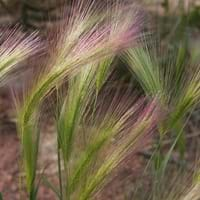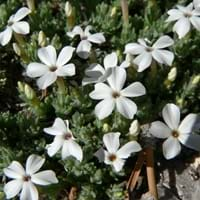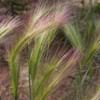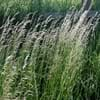Life Span
Perennial
Perennial
Type
Grass
Flowering Plants
Origin
Europe, Asia
California, Northwestern United States, United States
Types
not available
Not Available
Habitat
Grassland
Rich Woods
USDA Hardiness Zone
4-8
4-8
AHS Heat Zone
Not Available
8-1
Sunset Zone
2a, 2b, 3a, 3b, 4, 5, 6, 7, 8, 9, 10, 14, 15, 16, 17, 21, 22, 23, 24
1a, 1b, 2a, 2b, 3a, 3b, 4, 5, 6, 7, 8, 9, 10, 11, 12, 13, 14, 15, 16, 17
Habit
Clump-Forming
Mat-forming
Flower Color Modifier
Bicolor
Bicolor
Fruit Color
Not Available
Not Available
Leaf Color in Spring
Purple, Dark Green
Green
Leaf Color in Summer
Light Green
Green
Leaf Color in Fall
Purple, Dark Green
Green
Leaf Color in Winter
Tan
Not Available
Leaf Shape
Grass like
Ovate-lanceolate
Plant Season
Summer, Fall
Spring
Sunlight
Full Sun, Partial Sun
Partial Sun, Partial shade
The pH of Soil
Acidic, Neutral, Alkaline
Neutral
Soil Drainage
Average
Well drained
Bloom Time
Spring, Late Spring, Early Summer, Summer
Spring
Tolerances
Wet Site, Salt
Not Available
Where to Plant?
Ground
Container
How to Plant?
Seedlings
Cuttings, Seedlings
Plant Maintenance
Medium
Medium
Watering Requirements
Requires a lot of watering, Requires regular watering
Requires regular watering
In Summer
Lots of watering
Lots of watering
In Spring
Ample Water
Moderate
In Winter
Moderate
Average Water
Soil pH
Acidic, Neutral, Alkaline
Neutral
Soil Drainage Capacity
Average
Well drained
Sun Exposure
Full Sun, Partial Sun
Partial Sun, Partial shade
Pruning
Prune to control growth
Remove dead flowers
Fertilizers
Requires high amount of nitrogen
Apply 10-10-10 amount
Pests and Diseases
Red blotch
Leaf spot, Powdery mildew, Rust
Plant Tolerance
Wet Site
Drought
Flower Petal Number
Single
Single
Foliage Texture
Medium
Medium
Foliage Sheen
Matte
Matte
Attracts
Not Available
Hummingbirds, Butterflies
Allergy
Asthma, conjunctivitis, Rhinitis
Mild Allergen
Aesthetic Uses
Not Used For Aesthetic Purpose
Ground Cover
Beauty Benefits
Not Available
Not Available
Environmental Uses
Food for animals, Food for insects, Wildlife
Air purification
Medicinal Uses
No Medicinal Use
Boils, Eczema, Intestinal disorders
Part of Plant Used
Whole plant
Flowers, Leaves, Root
Other Uses
cultivated as pasture or hay crop, Food for animals, Food for insects
As a tea substitute, Used as eyewash
Used As Indoor Plant
No
No
Used As Outdoor Plant
Yes
Yes
Garden Design
Bedding Plant, Feature Plant, Groundcover
Mixed Border, Rock Garden / Wall, Wildflower
Botanical Name
ALOPECURUS
Phlox condensata
Common Name
Foxtail Grass
Phlox condensata
In Hindi
Foxtail Grass
Phlox condensata
In German
Foxtail Grass
Phlox condensata
In French
Foxtail Grass
Phlox condensata
In Spanish
Hierba de cola de zorra
Phlox condensata
In Greek
αλωπέκουρου Grass
Phlox condensata
In Portuguese
grama de foxtail
Phlox condensata
In Polish
ber trawy
Phlox condensata
In Latin
panicum Grass
Phlox condensata
Phylum
Magnoliophyta
Magnoliophyta
Class
Liliopsida
Magnoliopsida
Order
Cyperales
Solanales
Family
Poaceae
Polemoniaceae
Clade
Not Available
Angiosperms, Asterids, Eudicots
Tribe
Not Available
Phlocideae
Subfamily
Not Available
Polemonioideae
Number of Species
Not Available
Not Available
Properties of Foxtail Grass and Phlox condensata
Wondering what are the properties of Foxtail Grass and Phlox condensata? We provide you with everything About Foxtail Grass and Phlox condensata. Foxtail Grass doesn't have thorns and Phlox condensata doesn't have thorns. Also Foxtail Grass does not have fragrant flowers. Foxtail Grass has allergic reactions like Asthma, conjunctivitis and Rhinitis and Phlox condensata has allergic reactions like Asthma, conjunctivitis and Rhinitis. Compare all the properties and characteristics of these two plants. Find out which of these plant can be used as indoor plant. If you are interested to decorate your house and garden, find out aesthetic uses, compare them and select the plant which will beautify your surrounding. Along with beautification, try comparing medicinal and edible uses of Foxtail Grass and Phlox condensata and you can choose the plant having best and most benefits.
Season and Care of Foxtail Grass and Phlox condensata
Season and care of Foxtail Grass and Phlox condensata is important to know. While considering everything about Foxtail Grass and Phlox condensata Care, growing season is an essential factor. Foxtail Grass season is Summer and Fall and Phlox condensata season is Summer and Fall. The type of soil for Foxtail Grass is Loam and for Phlox condensata is Loam while the PH of soil for Foxtail Grass is Acidic, Neutral, Alkaline and for Phlox condensata is Neutral.
Foxtail Grass and Phlox condensata Physical Information
Foxtail Grass and Phlox condensata physical information is very important for comparison. Foxtail Grass height is 30.50 cm and width 30.50 cm whereas Phlox condensata height is 7.50 cm and width 50.00 cm. The color specification of Foxtail Grass and Phlox condensata are as follows:
Foxtail Grass flower color: White
Foxtail Grass leaf color: Purple and Dark Green
Phlox condensata flower color: White
- Phlox condensata leaf color: Green
Care of Foxtail Grass and Phlox condensata
Care of Foxtail Grass and Phlox condensata include pruning, fertilizers, watering etc. Foxtail Grass pruning is done Prune to control growth and Phlox condensata pruning is done Remove dead flowers. In summer Foxtail Grass needs Lots of watering and in winter, it needs Moderate. Whereas, in summer Phlox condensata needs Lots of watering and in winter, it needs Average Water.





